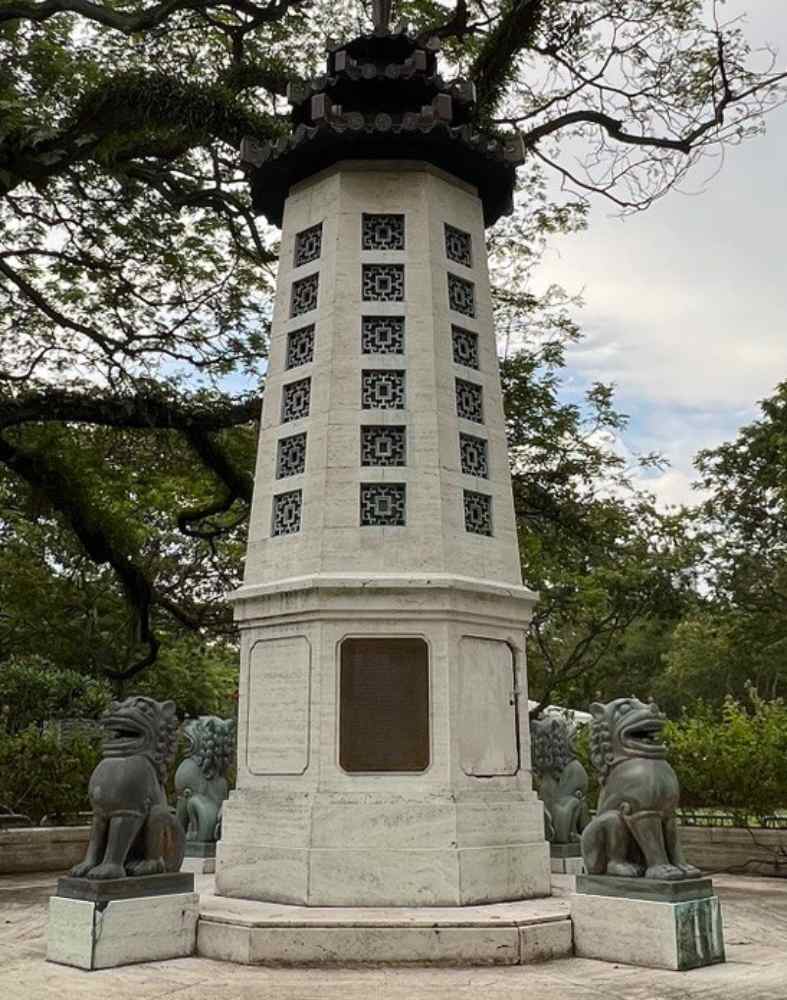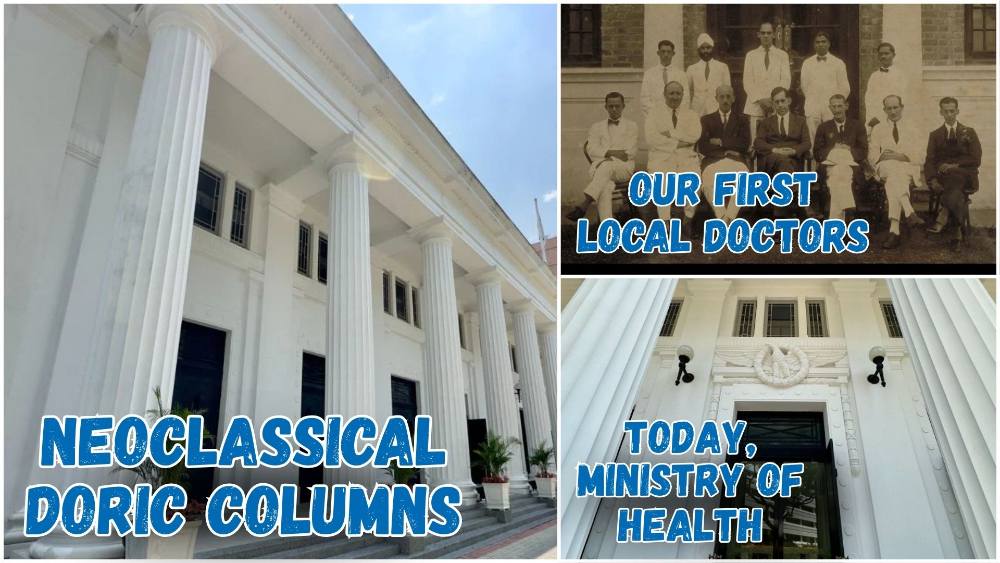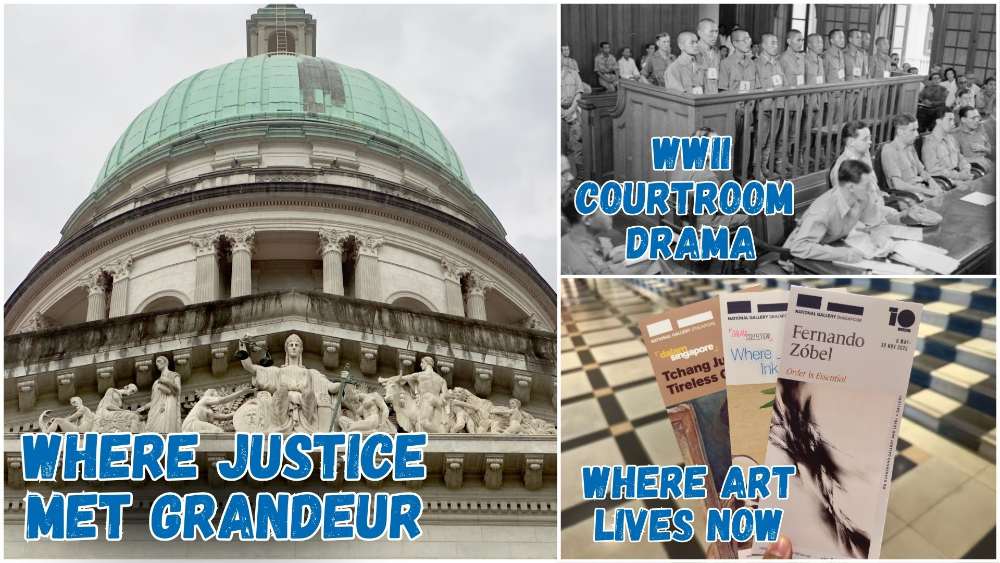National Monuments Of Singapore: Esplanade Park Memorials
What is a National Monument? Who gazettes them? How many national monuments are there in Singapore? To date, the Preservation of Sites and Monuments, a division of National Heritage Board, has identified and gazetted 75 buildings, structures and sites of national significance as an integral part of Singapore’s built heritage.
And we're here to tell you all about them - one National Monument at a time!
Here they all are on a Google Map we specially created. Every Wonderwall.sg logo, or "W", indicates a spot where a National Monument of Singapore is located:
You've probably passed by or stepped into more than a few of them without realising they were National Monuments: Al-Abrar Mosque, Asian Civilisations Museum (ACM), the Civilian War Memorial, Saint Andrew's Cathedral, Fort Siloso on Sentosa - no need to plan an itinerary for friends visiting from overseas; just show them this article ✌️
In this edition, we throw the spotlight on a National Monument that comprises three structures that have been collectively gazetted as the Esplanade Park Memorials.
📍 Location
The three memorials are all located within the 500m long Esplanade Park (built in 1943 during the Japanese Occupation), right beside The Padang. The nearest MRT stations are City Hall MRT or Esplanade MRT.
📅 Significant dates
Dates built:
- 1882: Tan Kim Seng Fountain
- 1920-1922: The Cenotaph
- 1953-1954: Lim Bo Seng Memorial
Milestones:
- 19 May 1882: Tan Kim Seng Fountain
- 31 Mar 1922: The Cenotaph
- 29 Jun 1954: Lim Bo Seng Memorial
Date gazetted collectively: 28 Dec 2010
📜 History
 The ornate Tan Kim Seng Fountain was commissioned by the Municipal Council to commemorate the philanthropist’s contributions to Singapore. | IMAGE: WIKIMEDIA COMMONS/@SENGKANG
The ornate Tan Kim Seng Fountain was commissioned by the Municipal Council to commemorate the philanthropist’s contributions to Singapore. | IMAGE: WIKIMEDIA COMMONS/@SENGKANG
 Today, the fountain is undergoing restoration, with completion slated for the 3rd quarter of 2024. IMAGE: NG KAI
Today, the fountain is undergoing restoration, with completion slated for the 3rd quarter of 2024. IMAGE: NG KAI
Tan Kim Seng Fountain
The fountain's namesake is Tan Kim Seng (18 Nov 1806 – 14 Mar 1864), a Singaporean businessman born in Malacca, Malaya. He was a wealthy trader and property owner, a leader of the local Chinese community, and an avid supporter of the Chinese Pauper Hospital (Tan Tock Seng Hospital today). One of his most notable contributions: a generous monetary gift of $13,000 for the construction of Singapore's first reservoir and waterworks, to supply freshwater to the Singapore Town in 1857.
To commemorate Tan’s generous contribution towards the establishment of the waterworks, the municipal commissioners erected the Tan Kim Seng Fountain at Fullerton Square on 19 May 1882. It was later moved to the Esplanade Park at Connaught Drive in 1929 to make way for a carpark after construction of the Fullerton Building (now The Fullerton Hotel Singapore).
In Jan 1994, the fountain was shut down for repairs that lasted seven months. As part of the $1.12 million restoration project, the seven-metre-high cast-iron fountain was rust-proofed and a new foundation was built.
The memorial is currently closed for restoration works, and is due for completion in the later half of 2024.
 The Cenotaph is a war memorial that commemorates the military personnel who fought and sacrificed their lives in both World Wars. | IMAGE: NG KAI
The Cenotaph is a war memorial that commemorates the military personnel who fought and sacrificed their lives in both World Wars. | IMAGE: NG KAI
The Cenotaph
The Cenotaph was originally erected to honour the 124 men from the Colony of Singapore who left for the war in Europe during the First World War (1914–1918) and never returned, with their names inscribed on bronze plates mounted on the memorial. The foundation stone was laid by Sir Lawrence Nunns Guillemard, the then-Governor of the Straits Settlements, on 15 Nov 1920. The Cenotaph was unveiled on 31 Mar 1922 by the Prince of Wales, who became King Edward VIII and later, Duke of Windsor.
After the Japanese Occupation (1942–1945), the reverse side of the Cenotaph was dedicated as a memorial to the military personnel who defended Singapore and perished during the Second World War. The words "They died that we might live" were cast in bronze plates in Singapore’s four official languages – English, Chinese, Malay (in Jawi script), and Tamil – and set on the structure.

Lim Bo Seng Memorial is the only commemorative structure in Singapore that honours the sacrifice of an individual during the Second World War. | IMAGE: NG KAI
Lim Bo Seng Memorial
Lim Bo Seng was born on 27 Apr 1909 in Nan’an in Fujian Province. Recognised as a local war hero in Singapore, he was instrumental in anti-Japanese efforts during the warring period, with a posthumous rank of Major-General awarded to him by the Nationalist Government of the Republic of China in 1946.
Lim's unfortunate death was due to being betrayed and then arrested by the Kempeitai (Japanese Military Police) while travelling through a checkpoint in Gopeng, Perak. Despite repeated torture, he refused to name his companions. He finally succumbed to his injuries and died in Batu Gajah Prison, in Perak, on 29 Jun 1944.
In 1946, the Lim Bo Seng Memorial Committee, which included representatives from the Chinese Nationalist government, was established to raise funds for the construction of a public memorial dedicated to Lim. The colonial government rejected the committee’s proposal to build a memorial park around his grave, but granted permission for a memorial to be built at the Esplanade.
The foundation stone for the memorial was laid by Commissioner-General Malcolm MacDonald on 23 Nov 1953 in the presence of Lim’s family members. On 29 June the following year, the tenth anniversary of Lim’s death, General Sir Charles Loewen, then Commander-in-Chief of the Far East Land Forces, unveiled the memorial.
📐 Design and architecture

IMAGE: INSTAGRAM/@CAREBEARS_SHINE
Tan Kim Seng Fountain
The fountain was made by Andrew Handyside & Company of Britannia Ironworks from Derby, England.
The Victorian-style iron fountain has three tiers and features four Muses – Greek goddesses of science, literature, and the arts – in its lower bowl, each bearing an object of her patronage. Calliope, the Muse of Epic Poetry, carries a writing tablet; Clio, the Muse of History, carries a scroll; Erato, the Muse of Lyric Poetry, carries a lyre; and Melpomene, the Muse of Tragedy, carries a wreath. Beneath the sculptures of the Muses are four faces of Poseidon, the Greek God of the Sea, each spouting water.

IMAGE: NG KAI
 IMAGES: WIKIMEDIA COMMONS/@JNZL
IMAGES: WIKIMEDIA COMMONS/@JNZL
The Cenotaph
The Cenotaph was designed by Denis Santry from the renowned architectural firm Swan & Maclaren. He was also the architect for Sultan Mosque and the Former Tanjong Pagar Railway Station. The memorial was modelled after the 1920 Sir Edwin Lutyens Whitehall Cenotaph in Whitehall, London.
Constructed using local white granite, the structure is nearly 18m tall. There are five steps leading up to the memorial on both sides, each engraved with a year of the respective World Wars. On the Cenotaph is the phrase "Our Glorious Dead", which immediately calls to mind the sacrifice of the brave men.
At the top of the memorial is a sarcophagus, featuring a bronze medallion of a crown – a symbol of the Crown Colony – surrounded by a laurel wreath, which represents victory and peace.
 IMAGE: NG KAI
IMAGE: NG KAI
Lim Bo Seng Memorial
Lim Bo Seng Memorial was designed in the Chinese National style by local architect Ng Keng Siang. This style blends traditional Chinese elements with modern architecture, and is often characterised by a distinctively Chinese-style roof atop a concrete structure. The memorial comprises a 3.5-metre octagonal pagoda resting on a platform. Four bronze guardian lions sit at the base of the pagoda. Four commemorative plaques narrating the life and sacrifice of Lim in English, Chinese, Malay (in Jawi script), and Tamil can be found embedded on the façade of the memorial.
The memorial occupies a site measuring 30m by 24m, which was donated by the Government. The construction cost of $50,000 was funded by donations from the Chinese community.
🕖 Opening hours
Always open.
🎟️ Admission
Free.
For the latest updates on Wonderwall.sg, be sure to follow us on TikTok, Telegram, Instagram, and Facebook. If you have a story idea for us, email us at [email protected].










